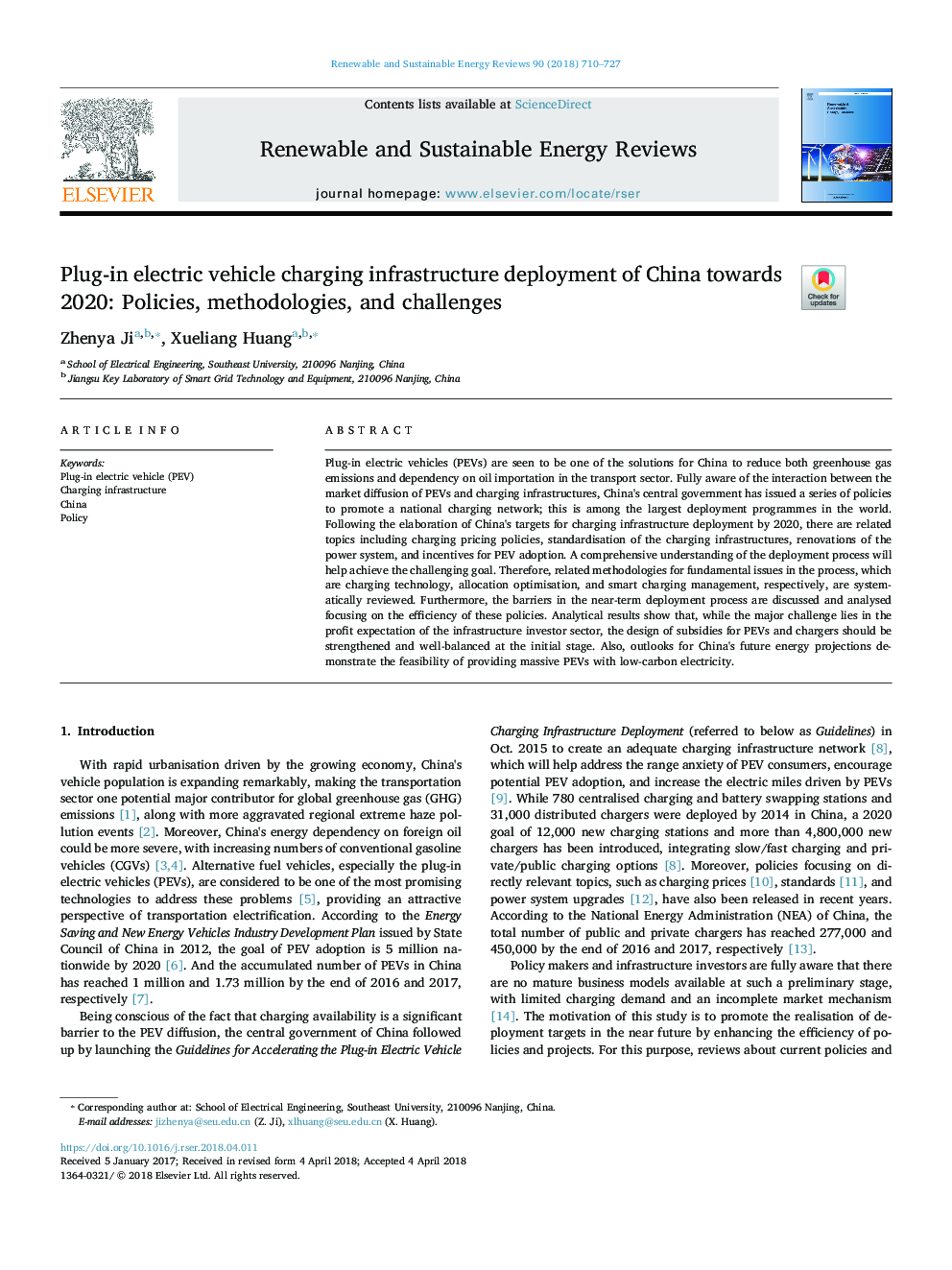| Article ID | Journal | Published Year | Pages | File Type |
|---|---|---|---|---|
| 8111385 | Renewable and Sustainable Energy Reviews | 2018 | 18 Pages |
Abstract
Plug-in electric vehicles (PEVs) are seen to be one of the solutions for China to reduce both greenhouse gas emissions and dependency on oil importation in the transport sector. Fully aware of the interaction between the market diffusion of PEVs and charging infrastructures, China's central government has issued a series of policies to promote a national charging network; this is among the largest deployment programmes in the world. Following the elaboration of China's targets for charging infrastructure deployment by 2020, there are related topics including charging pricing policies, standardisation of the charging infrastructures, renovations of the power system, and incentives for PEV adoption. A comprehensive understanding of the deployment process will help achieve the challenging goal. Therefore, related methodologies for fundamental issues in the process, which are charging technology, allocation optimisation, and smart charging management, respectively, are systematically reviewed. Furthermore, the barriers in the near-term deployment process are discussed and analysed focusing on the efficiency of these policies. Analytical results show that, while the major challenge lies in the profit expectation of the infrastructure investor sector, the design of subsidies for PEVs and chargers should be strengthened and well-balanced at the initial stage. Also, outlooks for China's future energy projections demonstrate the feasibility of providing massive PEVs with low-carbon electricity.
Related Topics
Physical Sciences and Engineering
Energy
Renewable Energy, Sustainability and the Environment
Authors
Zhenya Ji, Xueliang Huang,
